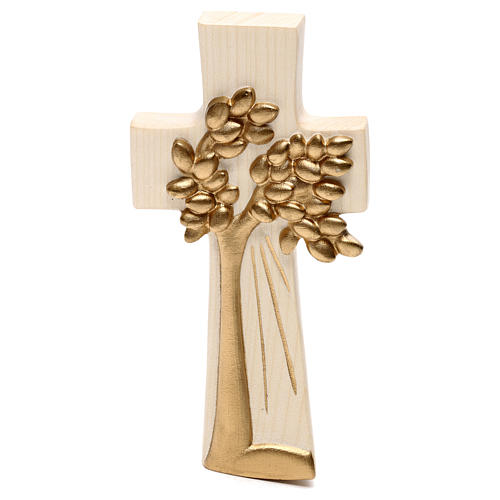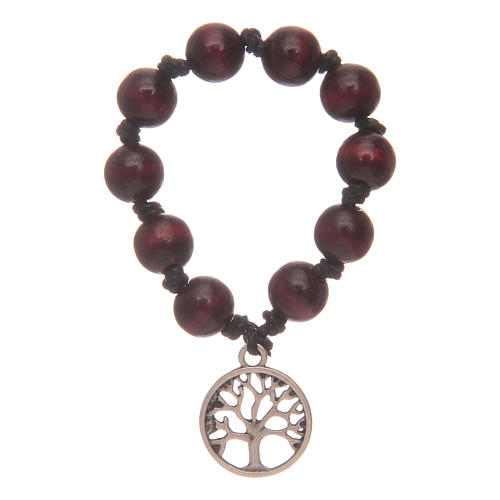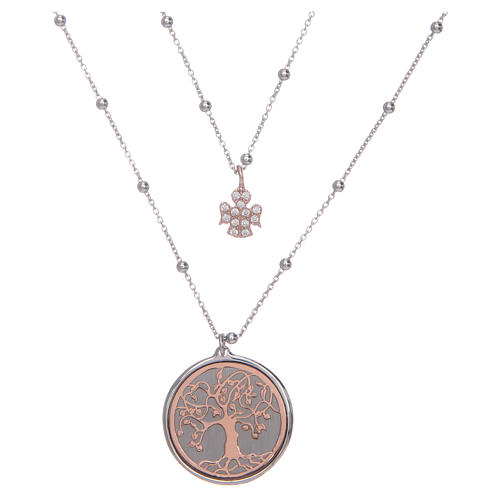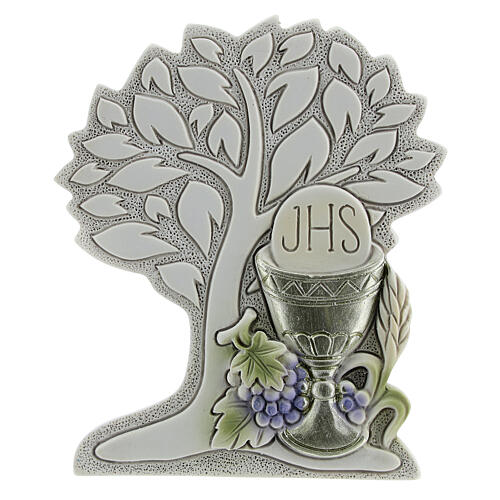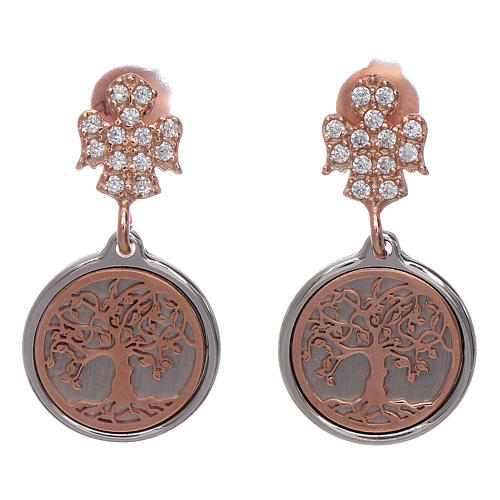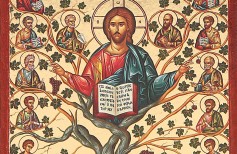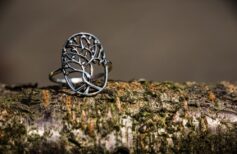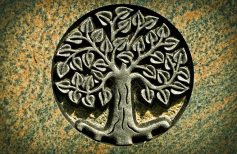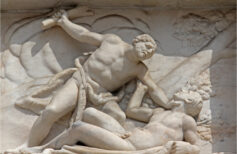The tree of life is mentioned in the Holy Scriptures, from Genesis to the Apocalypse, as a symbol of life par excellence. Is there really such a special tree?
Men have always attributed a symbolic and religious value to certain trees. Just think of all the religions that have placed them at the centre of their pantheon. Understanding the reasons for this deep connection between man and trees is not easy. Perhaps it arises from the fact that, since the most remote times, men sought shelter and protection in trees, ending up with the role of protective giants, sages, friends. Surely the shape of the tree itself, its vertical development contributed to the deepening of this spiritual bond. The tree unites heaven to earth, the world of gods to that of men, and in doing so it becomes divinity itself, and as such the bearer of the answers to all the questions, to all the contradictions that have always dominated the life of men: Good and Evil, Life and Death, Knowledge, Transmutation, Human and Divine.

The Garden of Eden in Genesis
The Garden of Eden represents the first, immense gift that God gave to man and woman. Lost following the original Sin, it remains…
Many archaic religions speak of a cosmic axis around which the entire universe would have formed, and which unites sky, earth and the underworld crossing them. An axis that often has the shape of a tree.
However we want to interpret it, the mythology linked to trees, in general, and to the tree of life in particular, is fascinating and has its roots – it must be said … – in the very origins of human history.
In a previous article, we focused on the meaning of the tree of life in the Christian context. We have examined how it is mentioned in the sacred texts, and how its symbolism recurs in Jewish culture and subsequently in Christian culture. According to the Bible, it stood in the middle of the garden of Eden, next to the tree of the knowledge of good and evil.

The meaning of the Tree of Life
All religions, since the origins of mankind, are somehow tied to trees…
It was thanks to its fruits that Adam and Eve were immortal, immune to the passage of time, old age and disease. With original sin, Adam and Eve lose the right to feed on the fruits of this miraculous tree. Also in this part of the story resides a profound symbolism: by eating the fruits of the tree of the knowledge of good and evil, the first man and the first woman lost the right to enjoy the benefits of the tree of life. Their sin was dictated by pride and arrogance. The knowledge of good and evil made them lose their innocence, made them aware of all those feelings and desires that they did not feel before, for the simple fact that in the Earthly Paradise they had everything they needed to be happy, complete. Man was not ready to face those feelings, those emotions, those needs: hatred, lies, shame, envy, blackmail, war.

The story of Adam and Eve
Who does not know the story of Adam and Eve, the first man and the first woman? But are we really sure that we know it properly…
However, despite the expulsion from the earthly Paradise, the tree of life remains in the sacred texts as a promise of salvation and hope of reconciliation with God, which continues to promise its fruits as a reward to those who will know how to follow the right path. The advent of Christ, the new Adam, the Son who, instead of defying the will of the Father out of pride, submits to it to its extreme consequences, represents a fundamental turning point for the spiritual history of man. And here is that the Cross on which Jesus dies for the salvation of all becomes the new tree of life, a symbol of salvation promised to all those who will know how to follow Christ’s example.
The symbolism of the tree remains a constant for believers and is still widespread today. The New Age philosophy has relaunched it, recovering above all folkloric and mythological aspects, but the essence of the Christian tradition continues to make it a very expensive and used symbol. For example, the tree of life favour is very popular and used especially for first communion and baptism, while wearing a jewel that depicts this particular symbol, such as a tree of life necklace or a tree of life bracelet is a way to manifest one’s faith in this mystical tree and all that it represents. Giving a jewel that represents him as a gift is a heartfelt wish for a prosperous and happy life, with solid roots, lush like foliage, intense and full of good fruits. For women, it also becomes a symbol of fertility. Given to a newborn baby, it is a way to celebrate a new life that is beginning.
The ‘real’ tree of life
But is there really a tree of life somewhere in the world? In the middle of the Bahrain desert, not far from Djebel Dukhan (the Mountain of Smoke) and 40 km from Manama, stands an ancient tree. It seems to have been here for more than four hundred years, flourishing in a barren, desert land devoid of vegetation.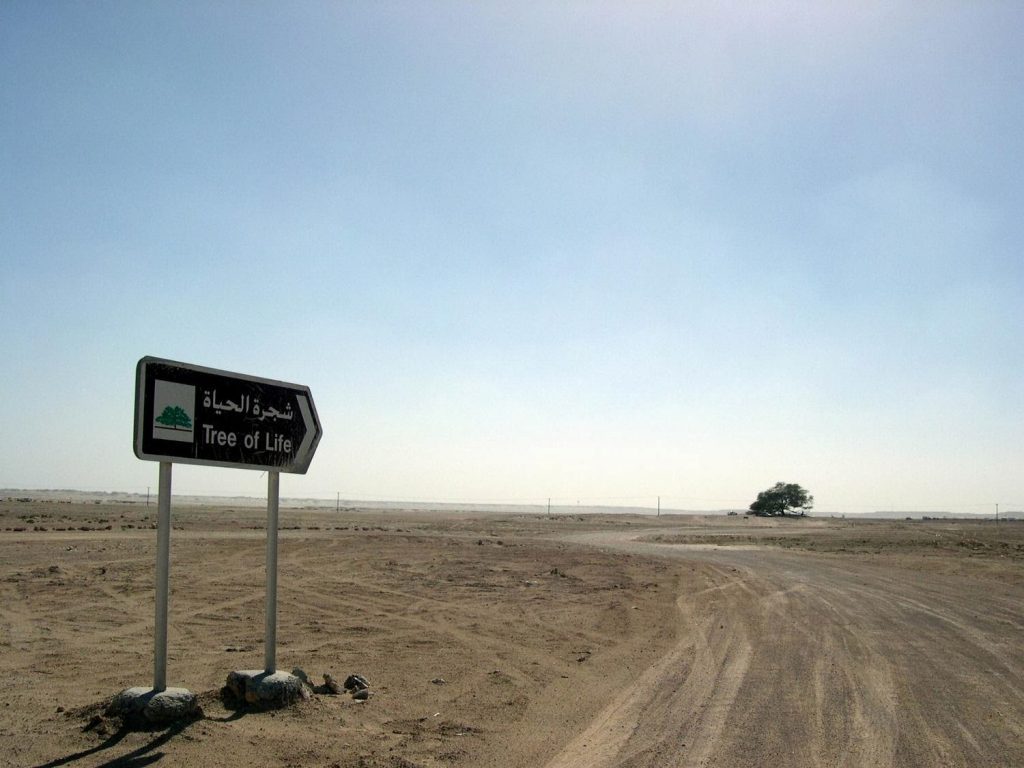
And yet it lives and thrives, and has exceeded ten metres in height, so much so that it deserves the reputation of a legendary tree and has made the oasis in which it stands one of the most mystical places in the world. The inhabitants of the region have given it the name Shajarat-al-Hayat, “tree of life”, and believe that the tree was planted here in 1583 to indicate the place where the Earthly Paradise originally extended. A bold statement, considering that nowadays the area is completely desert! But some surveys would have shown that, in ancient times, this region was rich in water, and an immense luxuriant oasis and was populated by a multitude of animals of all kinds extended.
The tree in question is a Prosopis cineraria, a shrub able to survive in extremely hostile conditions, thanks to its roots being capable of going down to 50 metres deep. This allows it to draw its nourishment even from arid and barren soil. Its resin produces rubber, candles and perfumes. It is visited by more than 50,000 tourists every year, so much so that it was necessary to protect it with an iron fence to prevent it from being damaged by some vandal. Numerous visitors had got into the bad habit of tearing leaves and twigs to take them away as lucky charms or souvenirs, or they enjoyed leaving their message engraved in its centuries-old trunk. For now, Shajarat-al-Hayat appears to be in excellent health, with large tangled branches, iridescent leaves ranging from green to brown in beautiful and vivid shades, a majestic trunk. It has been like this for over four hundred years, and we hope it will continue to be healthy for a long time to come.


